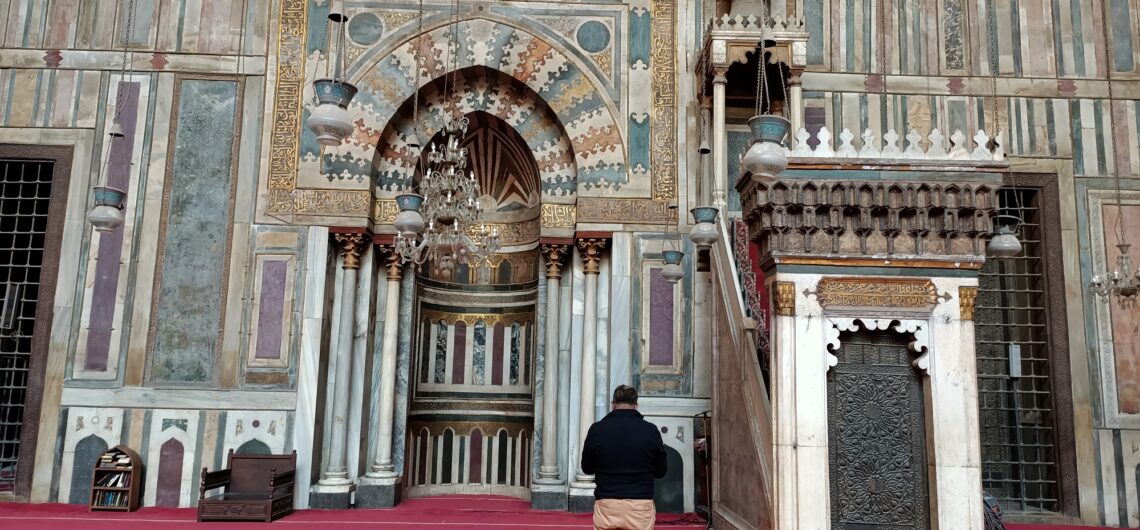Sultan Hassan | Sultan of Egypt | Mameluke Period
An-Naser Badr al-Din Hasan ibn Muhammad ibn Qalawun (1334/35–17 March 1361), better known as an-Naser Hassan, was the Mamluk sultan of Egypt, and the seventh son of an-Naser Muhammad Ibn Qalawun to hold office, reigning twice in 1347–1351 and 1354–1361.
He assumed power after his brother Al-Muzaffar Zain Al-Din Haji Bin Al-Nasser Muhammad, and after him, his brother Al-Nasser Badr Al-Din assumed power for the second time.
Birth and upbringing
Sultan Hassan was born in the year 1335 AD and grew up in the house of a king and a sultan. His father, Sultan Al-Nasir Muhammad Ibn Qalawun was the ruler of the brightest periods of the Mamluk state, in which the state reached the peak of its strength and glory.
and God willing, the young newborn will witness six years of his father’s prosperous rule, as he died in the year 1340 AD. Sultan Al-Nasir Muhammad Ibn Qalawun was succeeded by six of his sons, one of whom could hardly settle on the king until he is dismissed or killed and another took charge until it was the turn of Al-Nasser Hasan. So, he assumed the sultanate on 18th of December 1347 CE. a young boy who has no control over anything, little experience, and poor ability to confront princes and elders and manage matters.
Co-regent
The matter was being managed by the two princes, Manjik and his brother, “Bibgaars“, and Sultan Hassan became like the one who was interdicted. unable to act, and fate wanted the second year of his rule to witness the emergence of an epidemic that intensified in Egypt and killed hundreds of thousands.
Historians mention that he was dying in Egypt between ten thousand to fifteen thousand per day, and the pits were dug and the dead were thrown into them. Thirty or forty people were buried in the pit, and the people suffered from the taxes and royalties imposed on them by the two brutal princes. People faced two hardships, the severity of death, and the severity of tax collection.
The first mandate of Sultan Hassan
And in the year 1350 AD, the judges declared that the Sultan had reached the age of majority, and had become qualified to exercise the affairs of government without tutelage from anyone or interference from a prince.
The boy began to act like a real sultan after he ended his guardianship, and he reached the age of majority, but after a few months, the scene that was repeated a lot in the Mamluk era occurred, as the princes put on the war machine and declared the revolution, and Prince Taz al-Mansouri was at the head of the sedition. To the hall of Dheisheh, and they arrested Sultan Hassan and brought him to the hall of the harem!
He hardly held the reins of affairs in his hand until he arrested the two princes and confiscated their property. This was a warning to the rest of the princes whom they feared the increase in his power and the strengthening of his grip on power. so, they hastened to get rid of him before he got rid of them, and they were faster than him in movement.
so, they deposed him from the throne on 11 August 1351 AD, and they pledged allegiance to his brother, King Salah al-Din Ibn Muhammad Ibn Qalawun He was a boy of fourteen years old.
The second mandate of Sultan Hassan
The luck of the new sultan was not happier than his brother, Sultan Hassan, as he was restricted to disposition, not concluding an order or issuing a ruling. The power was gathered in the hands of the two princes Sarghtamysh and Sheikhoun.
when one of the princes tried to seek the help of the sultan to depose and arrest them, they rushed to arrest the sultan and return his brother Al-Nasir Hassan to power Again in the year 1354 AD.
when he assumed power, he remained as he was, subdued by his affairs, and possessed nothing of the sultanate except its name. He did not direct the rule and was not able to exercise it under the tyranny of the two princes Sarghtamysh and Sheikhoun.
When the second of them was killed in the year 1357 A.D., the other was singled out in the ruling. His affairs became great and he became protracted in the state, his wealth increased and his kingdoms multiplied. He was subjected to adversity, so he was earlier than his opponent, and he succeeded in arresting and imprisoning him.
He became an undisputed sultan, describing the atmosphere for him for the first time, and his decisions were liberated from restriction and control, and he proceeded with the affairs of the state himself without interference from anyone. It disappeared like a full moon in a cloud and returned to the Sultanate like a sword drawn from its sheath.
But that did not last long. When the matter was disputed with him. Prince Yalbugha Al-Omari, then he succeeded in arresting and killing the Sultan on March 17, 1361.
The End of Sultan Hassan
Historians described him as a resolute, majestic, and courageous king, with an effective word, who was not used to drinking alcohol and did not commit outward immorality. Al-Naser Hassan was killed by one of his own mamluks, Yalbugha al-Umari. Sultan Hassan was thirty years old on the day he was killed, and the duration of his reign in his second sultanate was six years and seven months.
Sultan Hassan buildings works
Throughout his second reign, an-Naser Hassan commenced the Sultan Hasan Mosque-Madrasa complex in Cairo, as well as other architectural works, namely religious structures, in Cairo, Jerusalem, Gaza, and Damascus.


